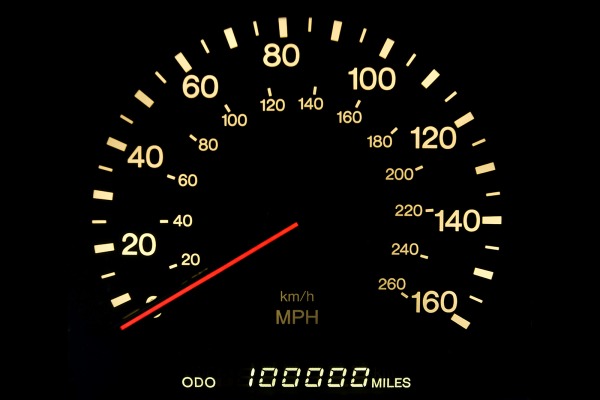
Imagine a friend asks you for some car buying advice. He's already picked out the perfect new car and plans to put some serious miles on it. To complicate things, he likes to get a new car every few years. Your friend is torn between a lease and a purchase. What advice would you give?
Conventional car buying wisdom says that high-mileage drivers should stick with purchases, because leases are made for people who don't rack up the miles. It's no secret that drivers of leased vehicles can face huge over-mileage charges if they exceed the lease's mileage limits.
By that logic, the answer would be obvious. You'd recommend purchasing the car.
However, that might not be the best advice. Your friend could very well be better off signing a high-mileage lease. If you've never heard of a high-mileage lease, you're not alone.
Mileage Limits
Probably the biggest misconception in the lease conversation concerns mileage limits.
Many car shoppers think that 12,000 miles per year is the maximum allowable mileage that can be had on a lease, but that's not always the case. Most leases can be tailored to allow for many more annual miles than the standard 12,000. In some cases, banks are willing to let a potential car lessee sign up for as many as 100,000 miles to be driven over the life of the typical three-year lease.
These miles don't come for free, of course. However, when you agree on these extra miles at the beginning of a lease, the mileage costs are cheaper than end-of-lease excess mileage charges. The driver of a high-mileage lease is essentially buying extra miles up front and adding the cost of the extra miles to the standard lease payment.
Show Me the Money
Here is an example of a 100,000-mile lease for a 2015 Honda Accord LX sedan, compared to a standard 36,000-mile lease and a standard 60-month loan for the purchase of the car.
This comparison uses the same selling price and down payment. The terms include tax and registration, based on Los Angeles County taxes and fees. The purchase payment is calculated using a 4.31 percent annual percentage rate, which was the average new-car finance rate in October 2014.
2015 Honda Accord LX Sedan Lease/Loan Term Monthly Payment Residual/Loan Payoff 36 months/36,000 miles $235 $13,980 residual value 36 months/100,000 miles $415 $8,106 residual value 60-month loan $410 $9,794 payoff amountAt the 36-month mark, when the high-mileage lease would be over, the driver who decided to instead purchase the vehicle would have $9,800 of payments left — on a car that's not worth that amount. Using the NADA trade-in guide to assess the value of a three-year-old Honda Accord LX sedan (in this case, a 2012 Honda Accord LX in average condition with an automatic transmission and 100,000 miles on the odometer), the trade-in value is an estimated $8,175. That's in line with Honda's expected residual value. However, the remaining loan balance of $9,794 for our 2015 example is nearly $1,600 more than that. The lesson here is that the faster a vehicle gains miles, the faster it loses value.
Why Choose a High-Mileage Lease?
A high-mileage lease can save a car shopper money and hassle. Assuming that the leased car isn't subjected to unusual wear and tear, the lessee just drops off the vehicle at the dealer at the end of the lease. There's no concern about the car's high mileage affecting its future value, because the driver is finished with the car.
On the other hand, negative equity (owing more on a car than it is actually worth) is a major concern for drivers who finance cars with little or no down payment and then pile on a lot of miles.
According to Edmunds.com transaction data, 47 percent of new-car deals made between January and October of 2014 included a trade-in, and nearly 28 percent of those vehicles traded in had negative equity. The average negative equity amount was $4,191. Negative equity can be dealt with in one of two ways: Either the owner pays it off as he sells or trades in his car or he rolls it into the next deal, making the newly purchased vehicle $4,191 more expensive.
Walk Away or Keep the Car?
Whether a lease is scheduled to end at 36,000, 75,000 or even 100,000 miles, the lease termination options are the same. At the end of a lease, the lessee can buy the vehicle for the residual amount. This is a great option for somebody who is still in love with the car.
For a driver who wants to move on to a different vehicle, terminating a lease is simple: Drop off the car at the dealer, fill out some forms and walk away.
Because of its flexibility, a high-mileage lease gives a driver an easy way to separate herself from a car that may soon need lots of upkeep, without the concern of carrying a negative equity balance on to the next car.
The driver who likes the freedom of having no car payment and doesn't mind owning a car and driving it until the wheels fall off won't be interested in a new lease contract every three years. But for a driver who likes to drive the latest models, expects to rack up some significant miles and doesn't want to commit to a long-term relationship with a car, a high-mileage lease is an option worth looking at closely.